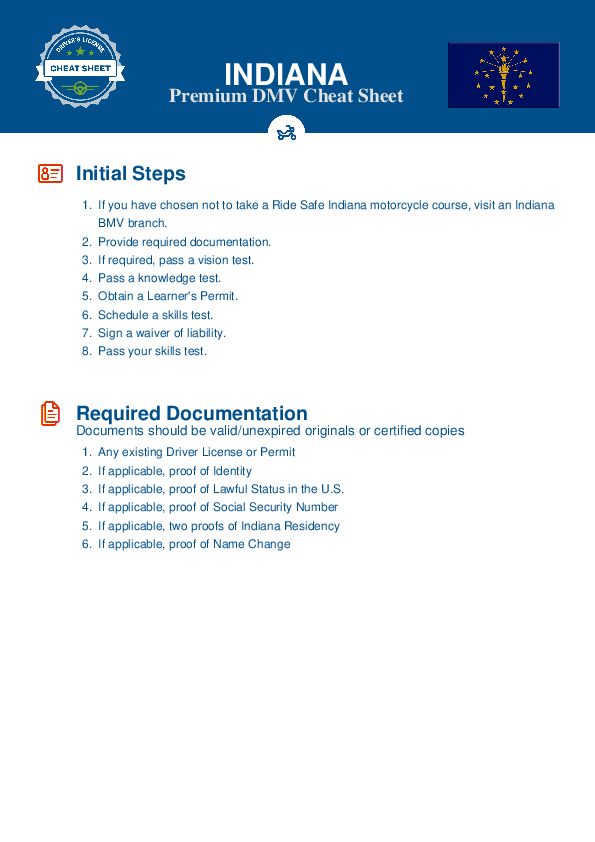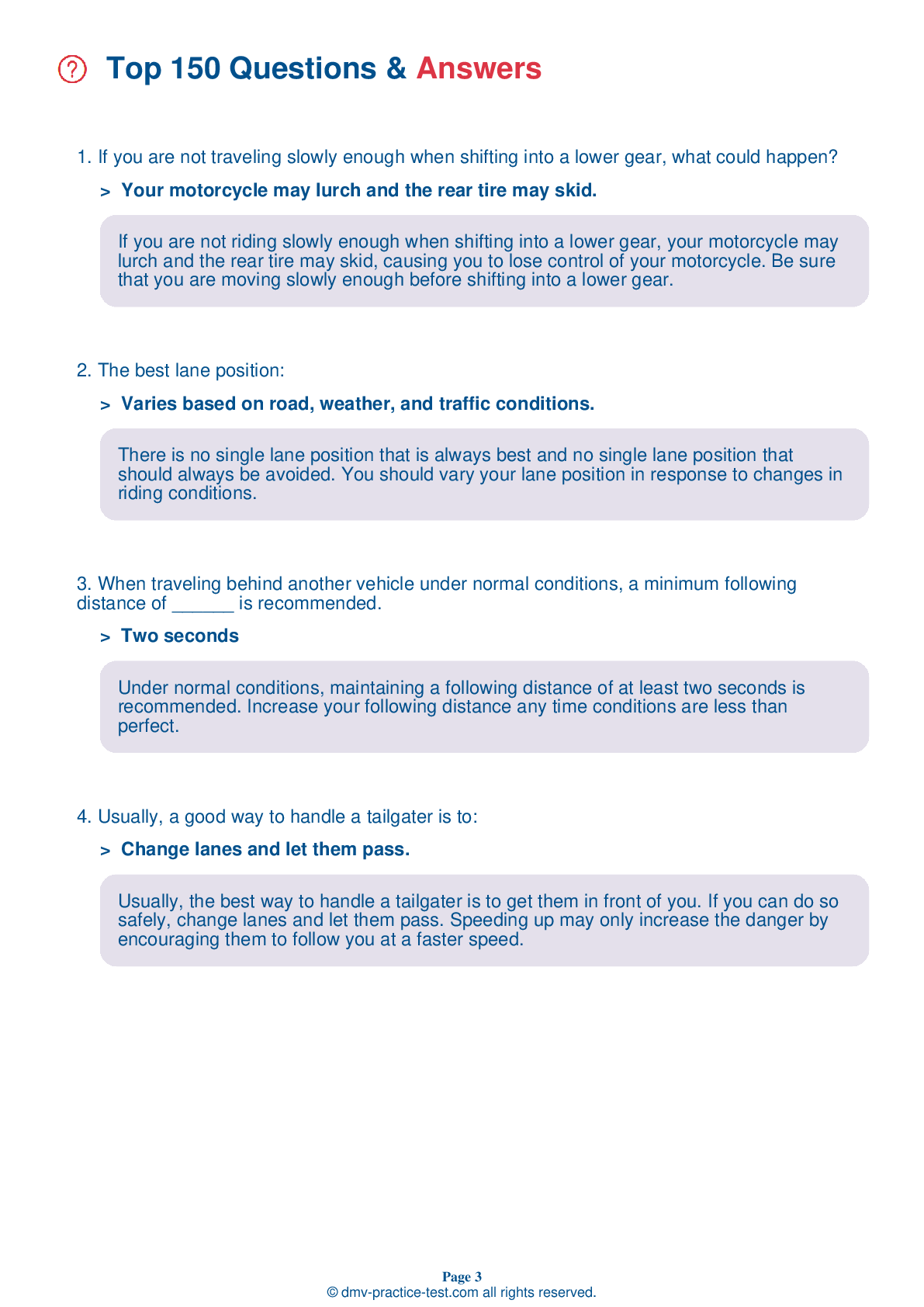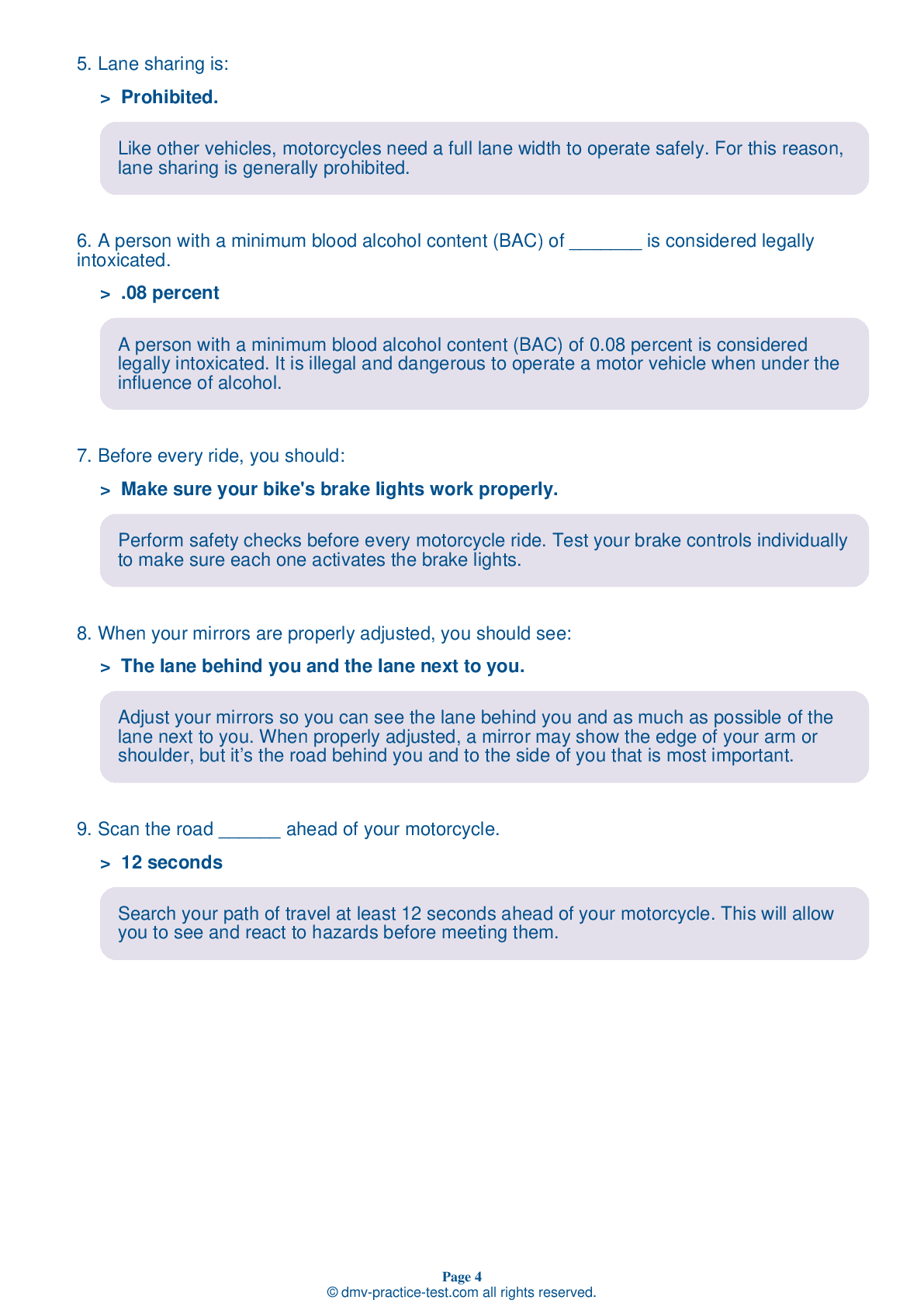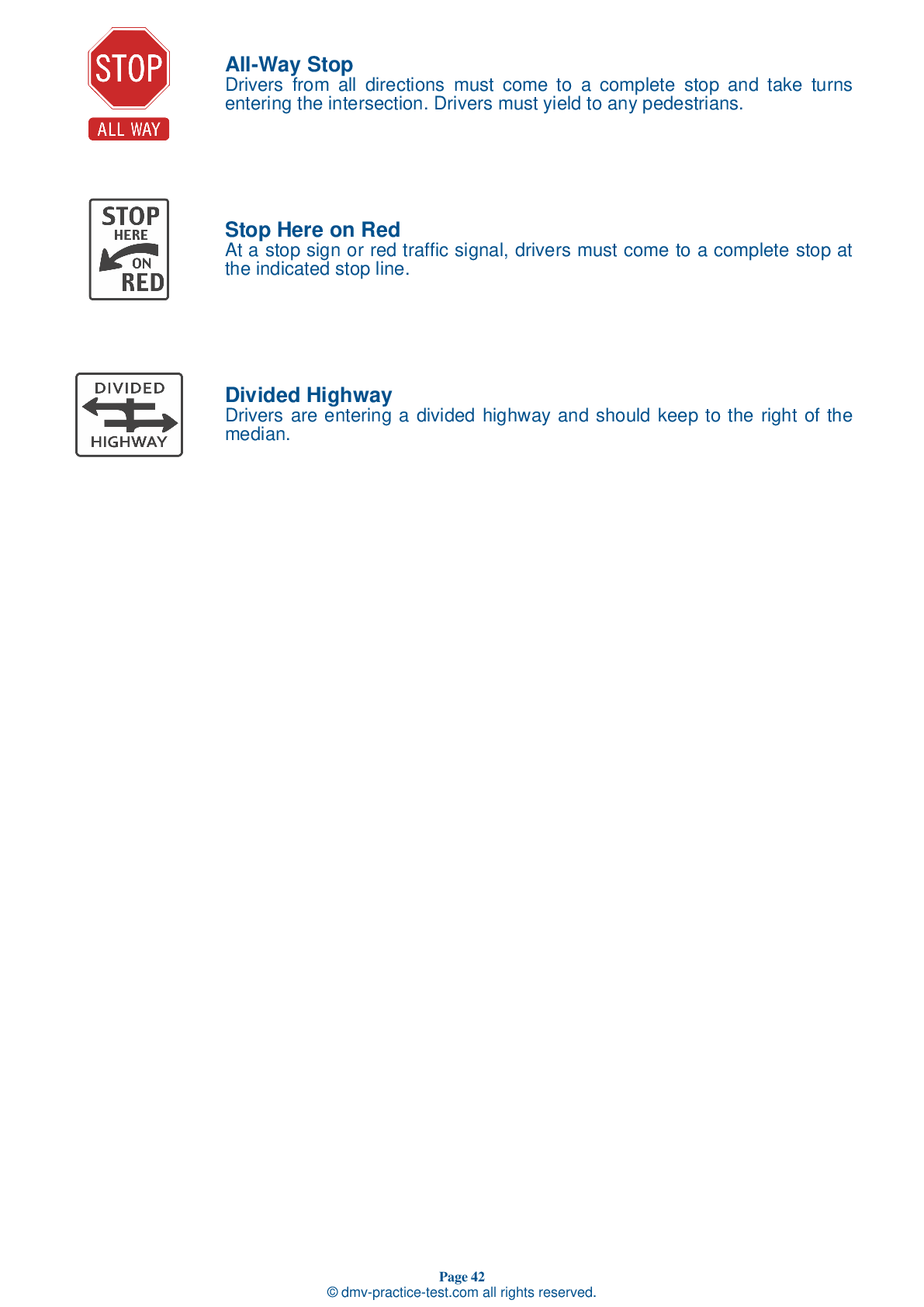Motorcycle Test | License IN 2025 | FREE Online Practice! #6 Page 2 of 4
Take this FREE motorcycle test (license in IN 2025) to check your knowledge of the road rules. To improve your results, download a motorcycle handbook online, study theory, and practice for free on our website. Still worried about how to get a motorcycle license in Indiana in 2025? Check our website for more sample tests, train as much as possible, and boost your grades!
7 . The only way to rid your body of alcohol is through:
The only way to remove the alcoholic content of a drink from your body is to allow your body time to eliminate it. There are no shortcuts to sobering up.
8 . Which of the following surfaces is unlikely to provide poor traction for motorcyclists?
A number of surfaces can provide poor traction for tires. Wet pavement; roads covered in loose gravel or sand; muddy, snowy, or icy areas; painted lane markings; and metal covers and plates in the road can be more hazardous for a motorcyclist than dry pavement.
9 . As you accelerate, you should:
As your motorcycle increases speed, you will need to shift up into higher gears. Shift up well before the engine RPM reaches its maximum recommended speed. As a general rule, shift up soon enough to avoid over-revving the engine, but not so soon that you will cause the engine to lug.
10 . When a lead rider's left arm is bent at the elbow with their index finger pointing straight up, it means:
Hand signals are an important part of communication when riding in groups. When the lead rider's left arm is bent at the elbow with their index finger pointing straight up, it means the group should move into a single-file formation.
11 . A proper lane position should do all of the following, except:
A properly chosen lane position should provide a number of benefits, including an increased ability to see others and to be seen. It should help you avoid wind blasts, other drivers' blind spots, and surface hazards. Your lane position should discourage other drivers from trying to share your lane and provide you with an escape route, should a hazard arise.
12 . When braking:
You should use both brakes every time you slow or stop.
See the exact questions that will be on the 2025 Indiana DMV exam.
99.2% of people who use the cheat sheet pass the FIRST TIME
Jeneen was tired of paying $5/gallon. She got herself a scooter that required the motorcycle license. She studyed the motorcycle test cheat sheet and passed her test the next day!
Christopher tells us how he knew nothing prior to obtaining the motorcycle study guide, and he only got one question wrong because he clicked on the wrong answer by mistake.



